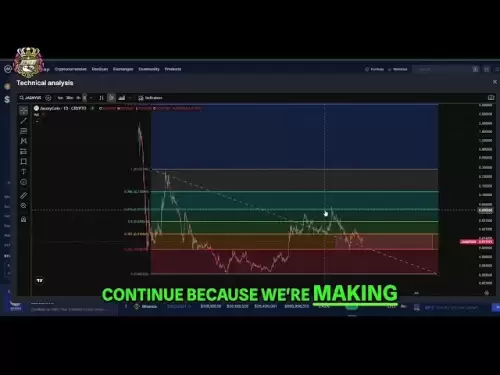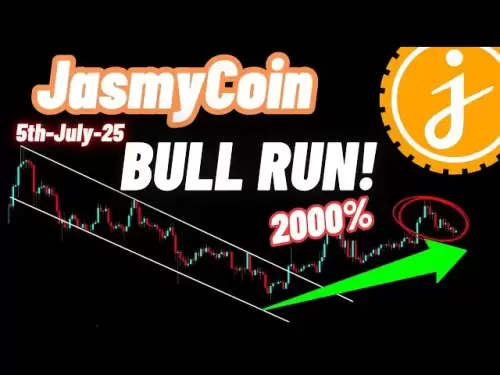-
 Bitcoin
Bitcoin $108,250.0992
0.11% -
 Ethereum
Ethereum $2,515.9404
0.03% -
 Tether USDt
Tether USDt $1.0003
0.00% -
 XRP
XRP $2.2166
-0.19% -
 BNB
BNB $656.5904
0.29% -
 Solana
Solana $147.4122
-0.58% -
 USDC
USDC $1.0000
-0.01% -
 TRON
TRON $0.2830
0.06% -
 Dogecoin
Dogecoin $0.1641
0.27% -
 Cardano
Cardano $0.5739
-0.19% -
 Hyperliquid
Hyperliquid $39.1463
-0.11% -
 Sui
Sui $2.8882
-0.02% -
 Bitcoin Cash
Bitcoin Cash $487.6428
0.31% -
 Chainlink
Chainlink $13.2097
0.07% -
 UNUS SED LEO
UNUS SED LEO $9.0308
0.10% -
 Avalanche
Avalanche $17.8608
0.13% -
 Stellar
Stellar $0.2379
-0.06% -
 Toncoin
Toncoin $2.7400
-0.39% -
 Shiba Inu
Shiba Inu $0.0...01144
-0.36% -
 Litecoin
Litecoin $87.5467
0.66% -
 Hedera
Hedera $0.1538
0.22% -
 Monero
Monero $315.5479
0.36% -
 Dai
Dai $1.0000
0.00% -
 Polkadot
Polkadot $3.3523
-0.71% -
 Ethena USDe
Ethena USDe $1.0003
0.01% -
 Bitget Token
Bitget Token $4.3960
-1.03% -
 Uniswap
Uniswap $7.2663
4.19% -
 Aave
Aave $272.8619
2.04% -
 Pepe
Pepe $0.0...09676
-0.18% -
 Pi
Pi $0.4586
-2.87%
Can AVL indicator be used to buy bottoms and sell tops? Is AVL reliable in extreme market conditions?
The AVL indicator helps traders gauge trend strength in crypto markets, but its reliability in extreme conditions requires careful analysis and confirmation with other tools.
May 21, 2025 at 08:28 pm
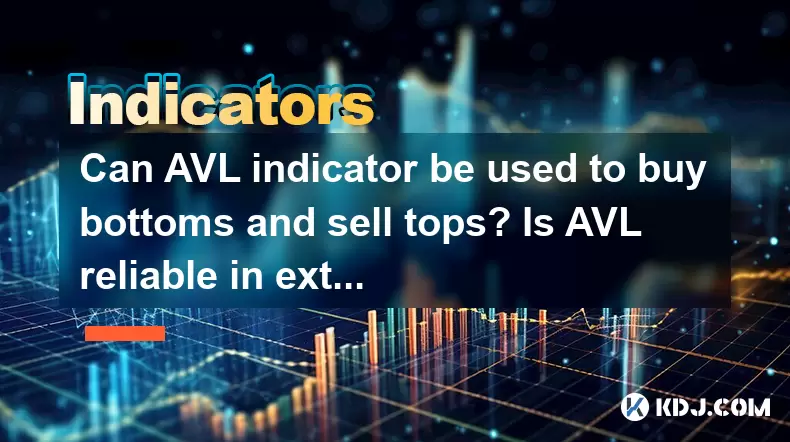
The Average Volume Line (AVL) indicator is a tool used by traders and investors in the cryptocurrency market to gauge the strength and direction of a trend based on volume. The question of whether the AVL can be used to buy bottoms and sell tops, and its reliability in extreme market conditions, is a complex one that requires a detailed exploration of its mechanics, application, and limitations.
Understanding the AVL Indicator
The AVL indicator is calculated by taking the average of the volume over a specified period. It helps traders understand whether the current volume is above or below the average, which can signal potential trend reversals or continuations. The basic idea is that an increase in volume above the average might indicate strong buying or selling pressure, which could lead to a significant price movement.
Using AVL to Buy Bottoms
When it comes to using the AVL to buy bottoms, the indicator can be particularly useful in identifying potential reversal points. A bottom in the market often coincides with a period where volume spikes due to capitulation selling. If the AVL shows a significant increase in volume at a low price level, it might suggest that the selling pressure is exhausting, and a reversal could be imminent.
- Look for a volume spike: Monitor the AVL for a significant increase in volume compared to the recent average.
- Confirm with price action: Ensure that the price action supports the potential bottom. Look for signs of a reversal, such as a bullish candlestick pattern or a bounce off a key support level.
- Enter the trade: Once the volume spike and price action align, consider entering a long position, anticipating a move upwards.
Using AVL to Sell Tops
Conversely, the AVL can be used to sell tops by identifying periods of high volume that might indicate the peak of a trend. A top in the market is often characterized by a surge in volume as traders rush to take profits. If the AVL shows a significant increase in volume at a high price level, it could signal that the buying pressure is waning, and a reversal might be near.
- Monitor for volume peaks: Watch the AVL for a notable increase in volume compared to the recent average.
- Check price action: Ensure that the price action supports the potential top. Look for signs of a reversal, such as a bearish candlestick pattern or a rejection at a key resistance level.
- Execute the trade: Once the volume peak and price action align, consider entering a short position, anticipating a move downwards.
Reliability of AVL in Extreme Market Conditions
The reliability of the AVL in extreme market conditions is a critical consideration for traders. Extreme conditions, such as market crashes or euphoric bull runs, can lead to highly volatile and unpredictable price movements. While the AVL can provide valuable insights, it is not infallible and should be used in conjunction with other indicators and analysis methods.
- High volatility: During periods of high volatility, the AVL might show frequent spikes, making it challenging to distinguish between genuine reversals and false signals. Traders should use additional tools, such as trend lines or moving averages, to confirm the signals provided by the AVL.
- Liquidity issues: In extreme market conditions, liquidity can dry up, leading to erratic volume patterns. The AVL may not accurately reflect the true market sentiment if the volume data is skewed by low liquidity.
- Market sentiment: Extreme market conditions are often driven by strong emotions like fear or greed. The AVL can help identify these emotional extremes, but traders must be cautious not to rely solely on volume data without considering broader market sentiment.
Combining AVL with Other Indicators
To enhance the effectiveness of the AVL indicator, it is advisable to combine it with other technical indicators. This approach can help filter out false signals and provide a more comprehensive view of the market.
- Moving Averages: Use moving averages to confirm the direction of the trend. If the AVL indicates a potential bottom or top, check if the price is also aligning with a moving average.
- Relative Strength Index (RSI): The RSI can help identify overbought or oversold conditions. If the AVL shows a volume spike at an RSI extreme, it may reinforce the likelihood of a reversal.
- Bollinger Bands: Bollinger Bands can help identify volatility and potential price breakouts. If the AVL indicates a significant volume change near a Bollinger Band, it could signal a strong move in the direction of the breakout.
Practical Example of Using AVL
To illustrate the use of the AVL indicator, consider a hypothetical scenario in the Bitcoin market. Suppose Bitcoin has been in a downtrend, and the price has reached a new low. The AVL shows a significant increase in volume at this low, suggesting that the selling pressure might be exhausting.
- Analyze the AVL: Notice the volume spike on the AVL, indicating a potential bottom.
- Confirm with price action: Look for a bullish candlestick pattern, such as a hammer or a doji, at the low price level.
- Check other indicators: Ensure that the RSI is in oversold territory and that the price is near a key support level.
- Enter the trade: If all these factors align, consider entering a long position, anticipating a reversal and a move upwards.
Similarly, if Bitcoin is in an uptrend and reaches a new high, and the AVL shows a significant increase in volume at this high, it might indicate that the buying pressure is waning.
- Analyze the AVL: Notice the volume peak on the AVL, suggesting a potential top.
- Confirm with price action: Look for a bearish candlestick pattern, such as a shooting star or an engulfing pattern, at the high price level.
- Check other indicators: Ensure that the RSI is in overbought territory and that the price is near a key resistance level.
- Enter the trade: If all these factors align, consider entering a short position, anticipating a reversal and a move downwards.
Limitations of the AVL Indicator
While the AVL indicator can be a valuable tool, it has its limitations and should not be used in isolation. Traders must be aware of these limitations to avoid potential pitfalls.
- False signals: The AVL can generate false signals, especially in choppy or sideways markets. Traders should always use additional confirmation tools to validate the signals provided by the AVL.
- Lag: The AVL is a lagging indicator, meaning it reacts to past price and volume data. This lag can result in missed opportunities or late entries into trades.
- Context dependency: The effectiveness of the AVL can vary depending on the specific market context. What works well in one market condition may not be as effective in another.
Frequently Asked Questions
Q1: Can the AVL indicator be used for all cryptocurrencies?
A1: The AVL indicator can be used for most cryptocurrencies, but its effectiveness may vary depending on the liquidity and trading volume of the specific asset. For highly liquid cryptocurrencies like Bitcoin and Ethereum, the AVL can provide more reliable signals. However, for less liquid altcoins, the volume data might be more erratic, reducing the reliability of the AVL.
Q2: How often should the AVL indicator be recalculated?
A2: The frequency of recalculating the AVL indicator depends on the trading timeframe and strategy. For short-term traders, recalculating the AVL on an intraday basis, such as every hour or every four hours, can be beneficial. For longer-term investors, recalculating the AVL on a daily or weekly basis might be more appropriate.
Q3: Can the AVL indicator be used in conjunction with fundamental analysis?
A3: Yes, the AVL indicator can be used alongside fundamental analysis to provide a more holistic view of the market. While the AVL focuses on volume and price data, fundamental analysis considers factors such as project developments, team performance, and market sentiment. Combining both approaches can help traders make more informed decisions.
Q4: How can traders avoid over-reliance on the AVL indicator?
A4: To avoid over-reliance on the AVL indicator, traders should diversify their analysis methods. This includes using multiple technical indicators, staying informed about market news and events, and regularly reviewing their trading strategies. Additionally, maintaining a trading journal can help traders track the performance of the AVL and other indicators over time, allowing them to adjust their approach as needed.
Disclaimer:info@kdj.com
The information provided is not trading advice. kdj.com does not assume any responsibility for any investments made based on the information provided in this article. Cryptocurrencies are highly volatile and it is highly recommended that you invest with caution after thorough research!
If you believe that the content used on this website infringes your copyright, please contact us immediately (info@kdj.com) and we will delete it promptly.
- BNB, Nano Labs, and Binance: A $160 Million Crypto Play
- 2025-07-06 12:30:13
- Bitcoin, Taxing, and Fund Managers: Navigating the Crypto Maze in NYC
- 2025-07-06 12:50:14
- Debt Ceiling, Trump, and Bitcoin's Allure: A New York Minute on Fiscal Policy
- 2025-07-06 12:30:13
- Bitcoin, Ethereum, and Crypto Gains: What's Hot in the NYC Crypto Scene?
- 2025-07-06 13:10:15
- Zerion: Real-Time Portfolio Tracking Revolutionized
- 2025-07-06 13:10:15
- Bitcoin Transfer, Market Dip, and Speculation: Decoding the Crypto Whale's Moves
- 2025-07-06 12:35:13
Related knowledge
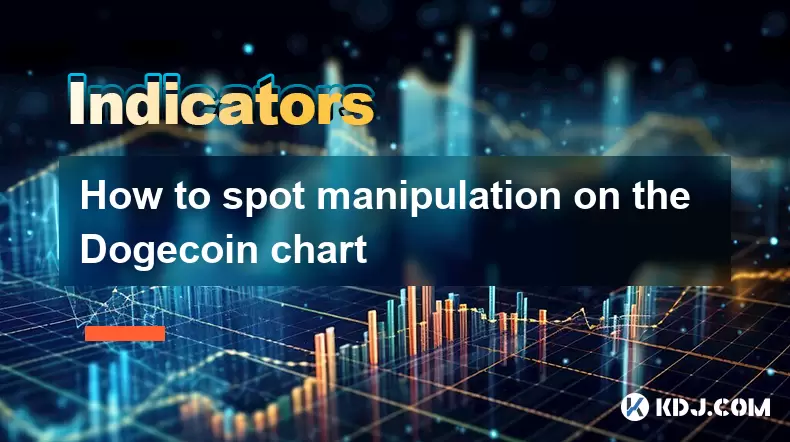
How to spot manipulation on the Dogecoin chart
Jul 06,2025 at 12:35pm
Understanding the Basics of Chart ManipulationChart manipulation in the cryptocurrency space, particularly with Dogecoin, refers to artificial price movements caused by coordinated trading activities rather than genuine market demand. These manipulations are often executed by large holders (commonly known as whales) or organized groups aiming to mislead...
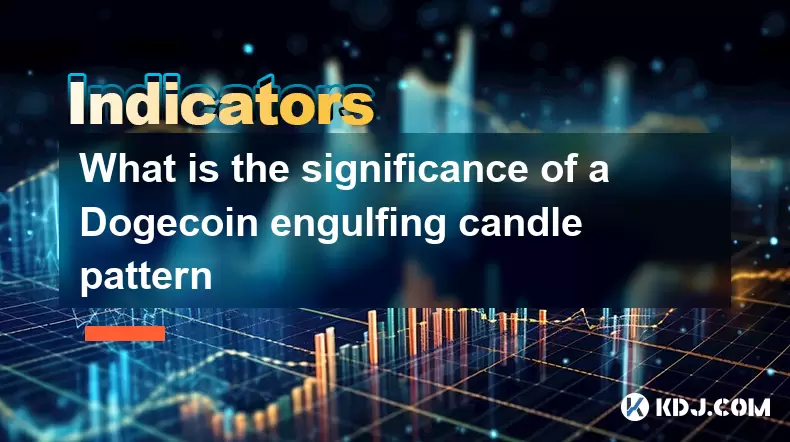
What is the significance of a Dogecoin engulfing candle pattern
Jul 06,2025 at 06:36am
Understanding the Engulfing Candle Pattern in CryptocurrencyThe engulfing candle pattern is a significant technical analysis tool used by traders to identify potential trend reversals in financial markets, including cryptocurrencies like Dogecoin. This pattern typically consists of two candles: the first one is relatively small and indicates the current...
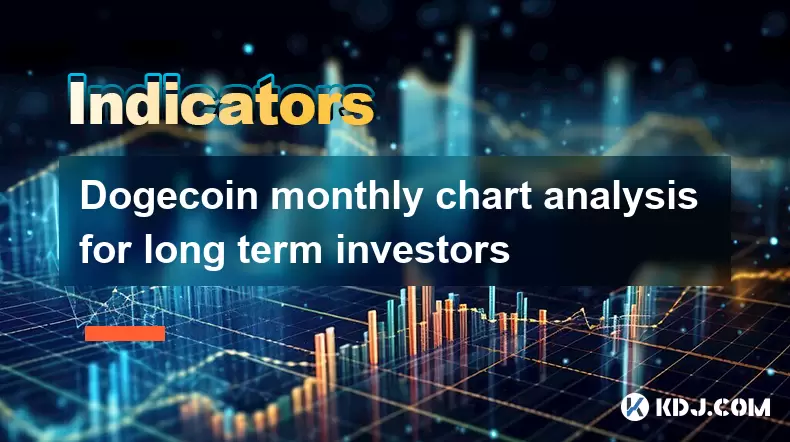
Dogecoin monthly chart analysis for long term investors
Jul 06,2025 at 10:08am
Understanding the Dogecoin Monthly ChartFor long-term investors, analyzing the monthly chart of Dogecoin (DOGE) provides a macro view of its price behavior over extended periods. The monthly chart captures major trends, key resistance and support levels, and potential reversal zones that are crucial for strategic investment planning. Unlike daily or hou...
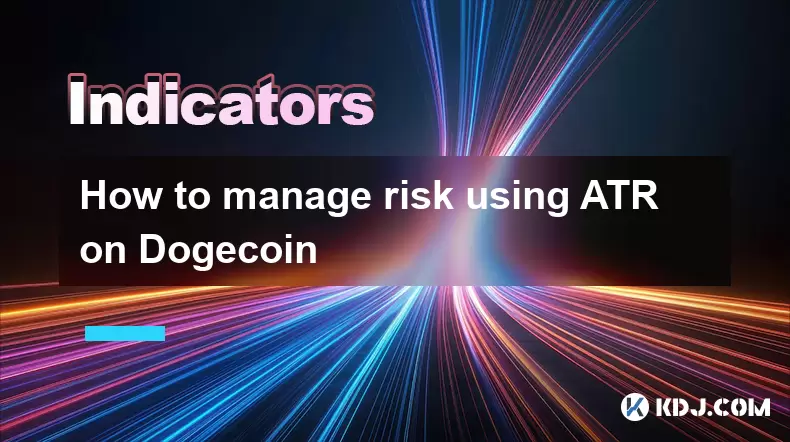
How to manage risk using ATR on Dogecoin
Jul 06,2025 at 02:35am
Understanding ATR in Cryptocurrency TradingThe Average True Range (ATR) is a technical indicator used to measure market volatility. Originally developed for commodities, it has found widespread use in cryptocurrency trading due to the high volatility inherent in digital assets like Dogecoin (DOGE). The ATR calculates the average range of price movement ...
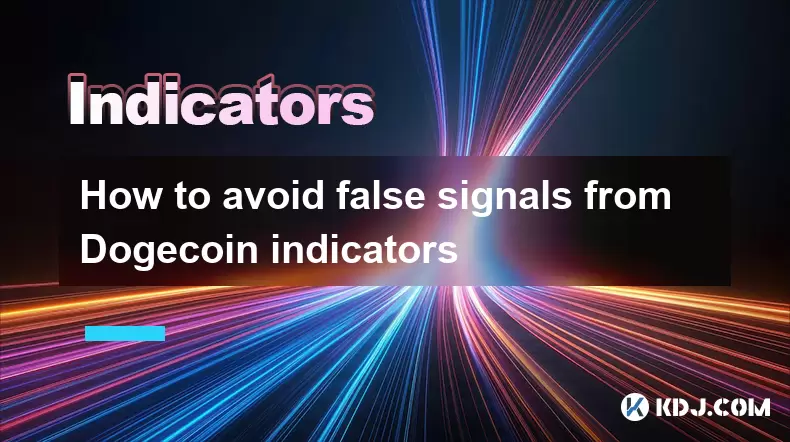
How to avoid false signals from Dogecoin indicators
Jul 06,2025 at 06:49am
Understanding Dogecoin Indicators and Their LimitationsDogecoin indicators are tools used by traders to analyze price movements and make informed decisions. These include moving averages, Relative Strength Index (RSI), MACD, and volume-based metrics. However, these tools can sometimes generate false signals, especially in highly volatile markets like Do...
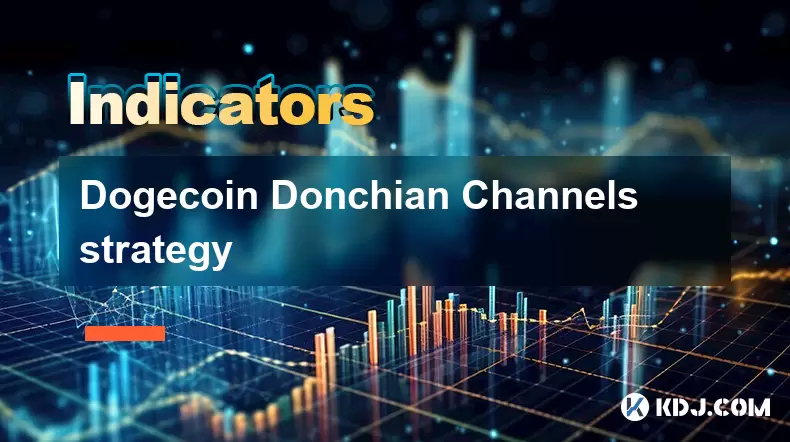
Dogecoin Donchian Channels strategy
Jul 06,2025 at 02:43am
What Are Donchian Channels?Donchian Channels are a technical analysis tool used to identify potential breakouts, trends, and volatility in financial markets. They consist of three lines: the upper band, which marks the highest high over a specific period; the lower band, which reflects the lowest low over the same period; and the middle line, typically ...

How to spot manipulation on the Dogecoin chart
Jul 06,2025 at 12:35pm
Understanding the Basics of Chart ManipulationChart manipulation in the cryptocurrency space, particularly with Dogecoin, refers to artificial price movements caused by coordinated trading activities rather than genuine market demand. These manipulations are often executed by large holders (commonly known as whales) or organized groups aiming to mislead...

What is the significance of a Dogecoin engulfing candle pattern
Jul 06,2025 at 06:36am
Understanding the Engulfing Candle Pattern in CryptocurrencyThe engulfing candle pattern is a significant technical analysis tool used by traders to identify potential trend reversals in financial markets, including cryptocurrencies like Dogecoin. This pattern typically consists of two candles: the first one is relatively small and indicates the current...

Dogecoin monthly chart analysis for long term investors
Jul 06,2025 at 10:08am
Understanding the Dogecoin Monthly ChartFor long-term investors, analyzing the monthly chart of Dogecoin (DOGE) provides a macro view of its price behavior over extended periods. The monthly chart captures major trends, key resistance and support levels, and potential reversal zones that are crucial for strategic investment planning. Unlike daily or hou...

How to manage risk using ATR on Dogecoin
Jul 06,2025 at 02:35am
Understanding ATR in Cryptocurrency TradingThe Average True Range (ATR) is a technical indicator used to measure market volatility. Originally developed for commodities, it has found widespread use in cryptocurrency trading due to the high volatility inherent in digital assets like Dogecoin (DOGE). The ATR calculates the average range of price movement ...

How to avoid false signals from Dogecoin indicators
Jul 06,2025 at 06:49am
Understanding Dogecoin Indicators and Their LimitationsDogecoin indicators are tools used by traders to analyze price movements and make informed decisions. These include moving averages, Relative Strength Index (RSI), MACD, and volume-based metrics. However, these tools can sometimes generate false signals, especially in highly volatile markets like Do...

Dogecoin Donchian Channels strategy
Jul 06,2025 at 02:43am
What Are Donchian Channels?Donchian Channels are a technical analysis tool used to identify potential breakouts, trends, and volatility in financial markets. They consist of three lines: the upper band, which marks the highest high over a specific period; the lower band, which reflects the lowest low over the same period; and the middle line, typically ...
See all articles





















